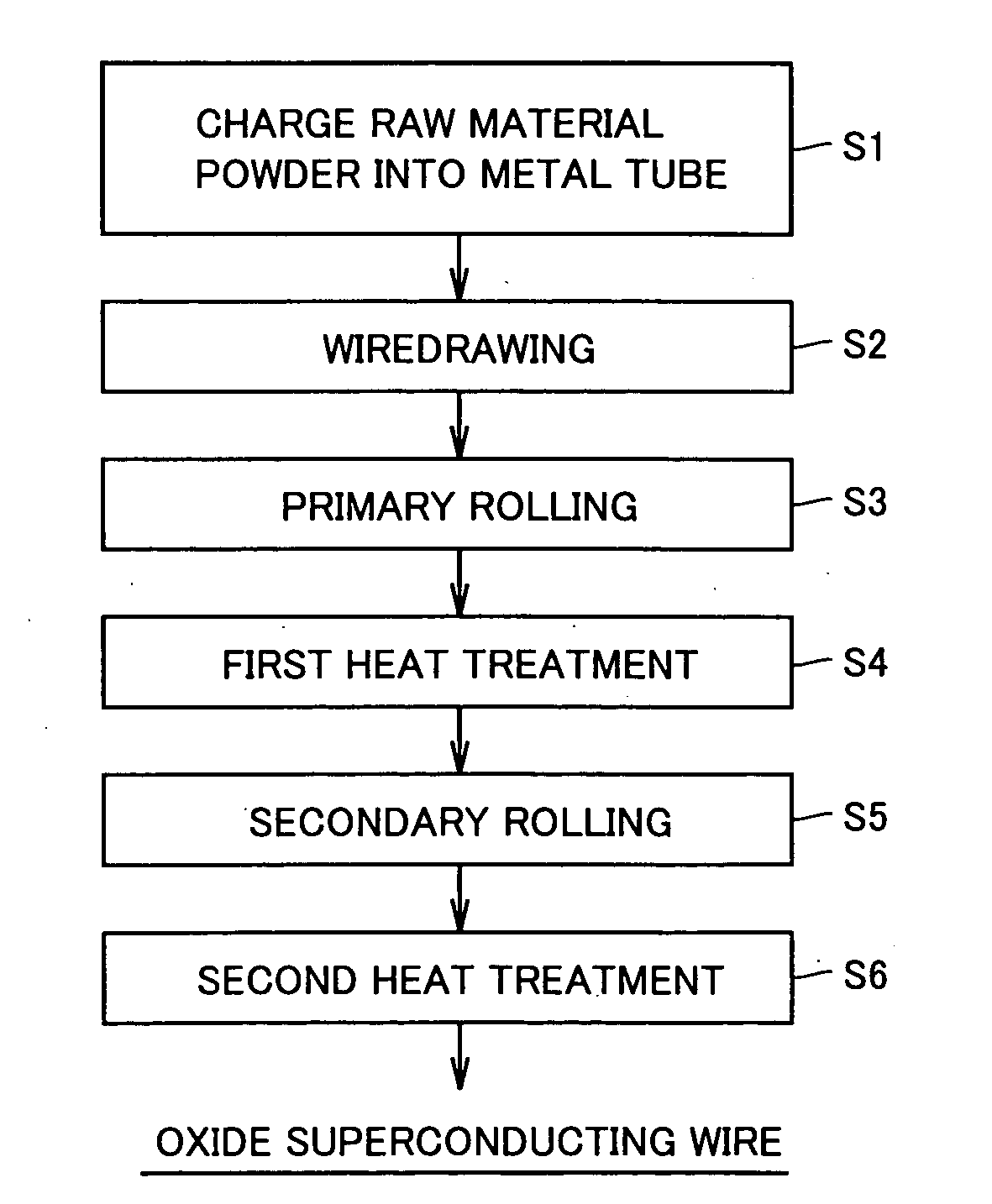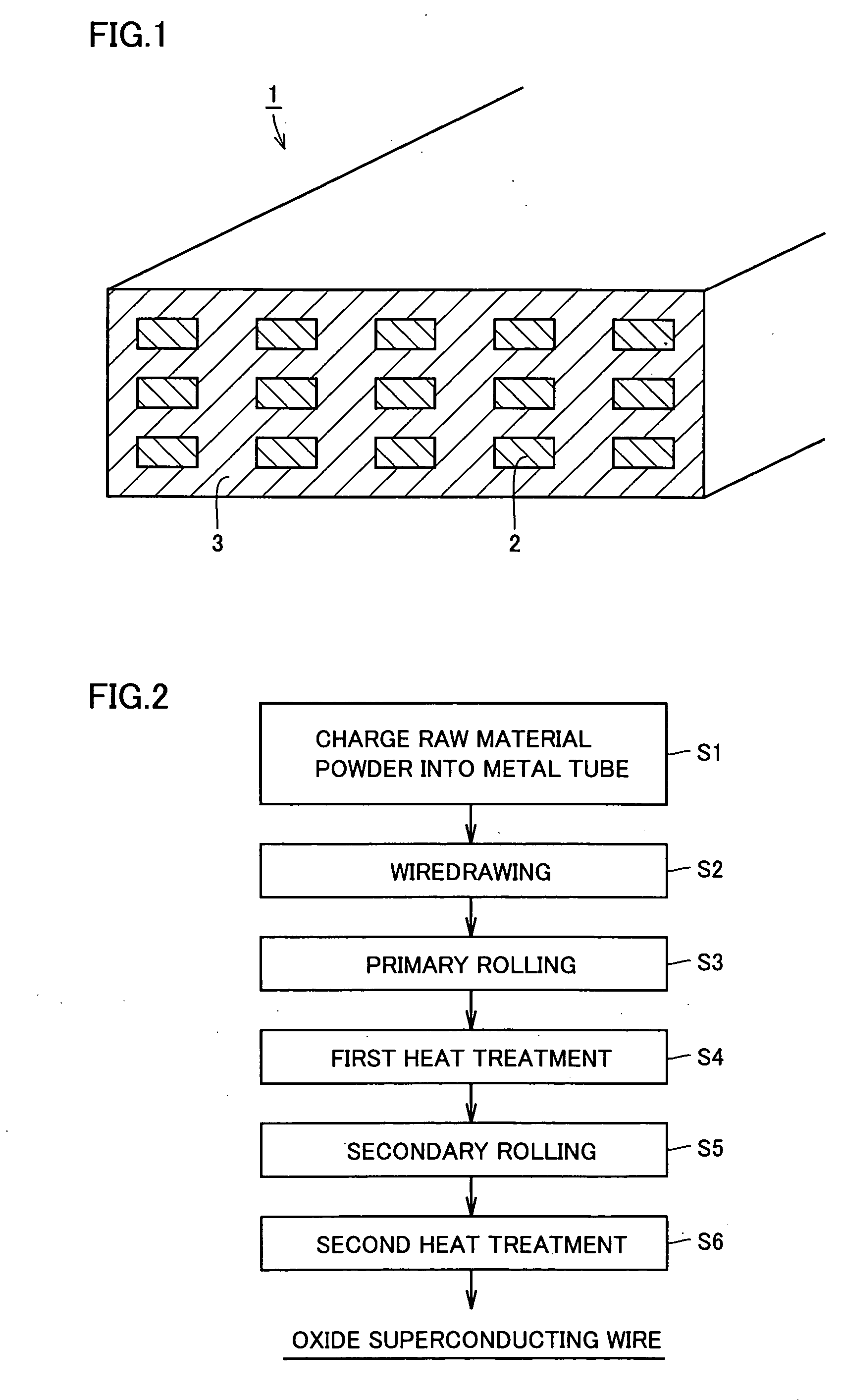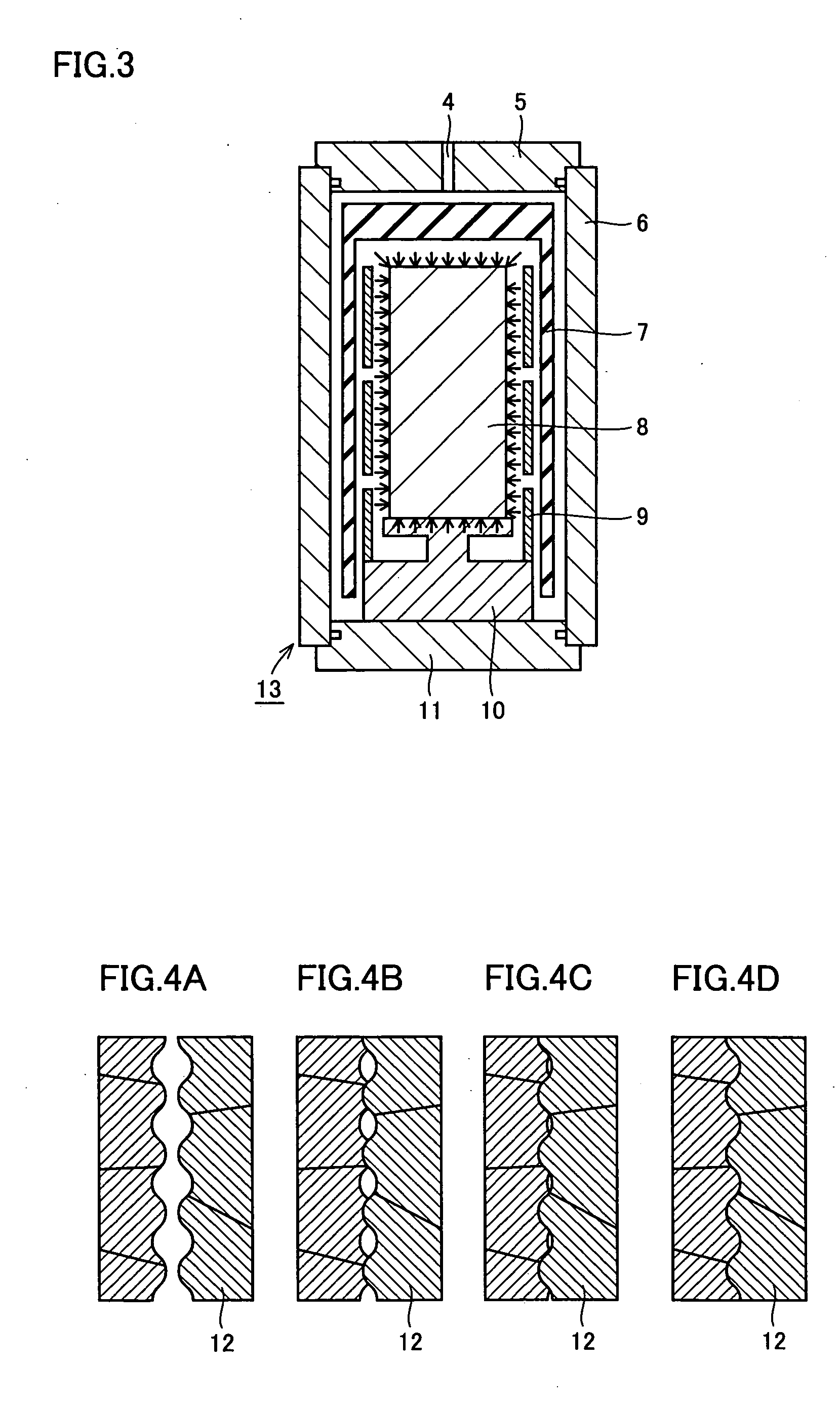Method of manufacturing oxide superconducting wire
a superconducting wire and oxide technology, applied in superconductors/hyperconductors, line/current collector details, electrical equipment, etc., can solve the problems of reducing the critical current density, disadvantageously reducing the superconductivity of the obtained oxide superconducting wire, and insufficient inhibition of the superconducting wir
- Summary
- Abstract
- Description
- Claims
- Application Information
AI Technical Summary
Benefits of technology
Problems solved by technology
Method used
Image
Examples
first embodiment
[0076] First Embodiment
[0077] A multifilamentary oxide superconducting wire, for example, is described with reference to FIG. 1. An oxide superconducting wire 1 has a plurality of oxide superconductor filaments 2 extending in the longitudinal direction and a sheath part 3 covering the same. The material for each of the plurality of oxide superconductor filaments 2 preferably has a Bi--Pb--Sr--Ca--Cu--O composition, for example, and a material including a Bi2223 phase having atomic ratios of (bismuth and lead):strontium:calcium:copper approximately expressed as 2:2:2:3 is optimum in particular. The material for the sheath part 3 consists of silver, for example.
[0078] While a multifilamentary wire has been described in the above, an oxide superconducting wire having a single-core wire structure comprising a single oxide superconductor filament 2 covered with a sheath part 3 may alternatively be employed.
[0079] A method of manufacturing the aforementioned oxide superconducting wire is ...
second embodiment
[0109] Second Embodiment
[0110] Heat treatment conditions in FIGS. 9A and 9B are a total pressure of 20 MPa, a partial oxygen pressure of 0.008 MPa, a temperature of 825.degree. C. in an atmosphere, and a heat treatment time of 50 hours. Referring to FIG. 9A, the thickness of an oxide superconducting wire having no pinholes is reduced by about 0.006 mm to 0.01 mm after a heat treatment. This is because formation of voids between oxide superconducting crystals and blisters of the oxide superconducting wire is suppressed due to the heat treatment in a pressurized atmosphere having the total pressure of 20 MPa. Referring to FIG. 9B, on the other hand, the thickness of an oxide superconducting wire having pinholes is reduced only by about 0.002 mm to 0.005 mm after the heat treatment, and formation of voids between oxide superconducting crystals and blisters of the oxide superconducting wire is not sufficiently suppressed. The thickness of a portion (portion A) having pinholes in the wir...
third embodiment
[0142] Third Embodiment
[0143] In order to further improve the critical current density of the oxide superconducting wire, the inventors have made deep studies as to the optimum partial oxygen pressure at the heat-up time before the heat treatment and in the heat treatment. Thus, results shown in FIG. 17 have been obtained.
[0144] Referring to FIG. 17, it is understood that a stable oxide superconducting phase is formed and the critical current density is improved in a temperature range of at least 815.degree. C. and not more than 825.degree. C. if the partial oxygen pressure is 0.007 MPa, for example. Further, a stable oxide superconducting phase is formed and the critical current density is improved in a temperature range of at least 750.degree. C. and not more than 800.degree. C., preferably in a temperature range larger by at least 770.degree. C. and not more than 800.degree. C. if the partial oxygen pressure is 0.0003 MPa, although this is not shown in the figure. In addition, a ...
PUM
| Property | Measurement | Unit |
|---|---|---|
| total pressure | aaaaa | aaaaa |
| total pressure | aaaaa | aaaaa |
| pressure | aaaaa | aaaaa |
Abstract
Description
Claims
Application Information
 Login to View More
Login to View More - R&D
- Intellectual Property
- Life Sciences
- Materials
- Tech Scout
- Unparalleled Data Quality
- Higher Quality Content
- 60% Fewer Hallucinations
Browse by: Latest US Patents, China's latest patents, Technical Efficacy Thesaurus, Application Domain, Technology Topic, Popular Technical Reports.
© 2025 PatSnap. All rights reserved.Legal|Privacy policy|Modern Slavery Act Transparency Statement|Sitemap|About US| Contact US: help@patsnap.com



